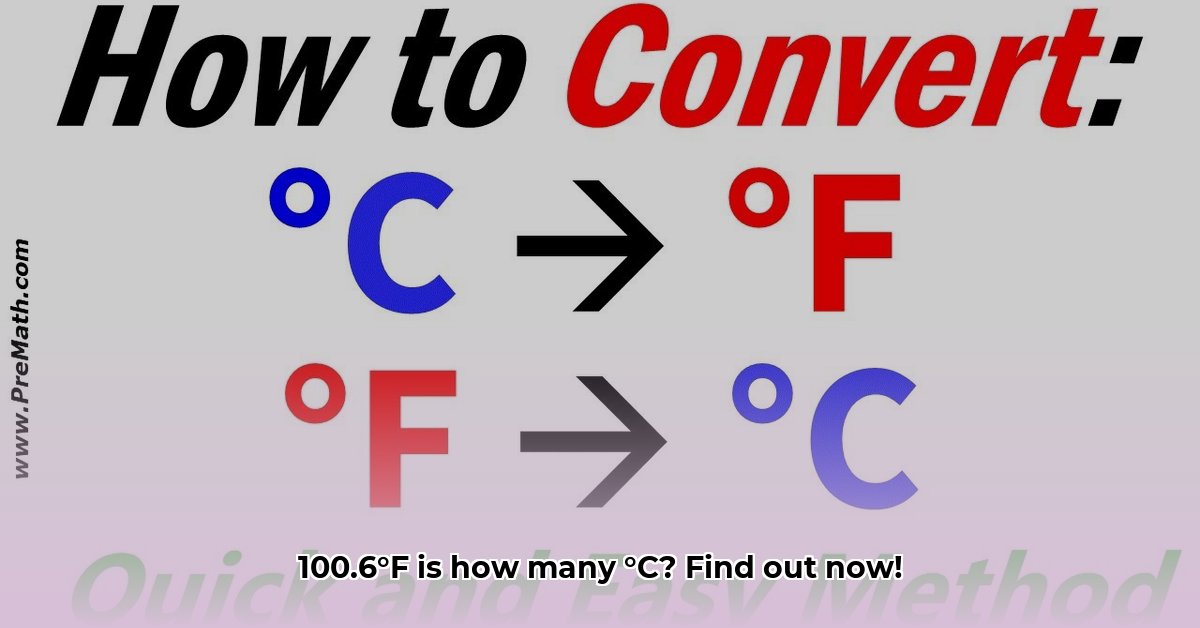38.1°C
Quick Conversion and Understanding the Scales
100.6 degrees Fahrenheit is equal to 38.1 degrees Celsius. This guide provides a clear explanation of the conversion process, the history of Fahrenheit and Celsius, and some practical applications.
Calculating the Conversion
The formula for converting Fahrenheit (°F) to Celsius (°C) is:
°C = (°F – 32) x 5/9
Let’s apply this to 100.6°F:
- Subtract 32: 100.6 – 32 = 68.6
- Multiply by 5/9: 68.6 x (5/9) = 38.1
Therefore, 100.6°F is equal to 38.1°C.
Fahrenheit and Celsius: A Tale of Two Scales
Why do we have two scales for temperature? It’s a bit like measuring distance in miles or kilometers—different units for the same thing.
-
Fahrenheit: Developed by Daniel Gabriel Fahrenheit in the early 18th century, this scale is primarily used in the United States. Water freezes at 32°F and boils at 212°F.
-
Celsius: Developed by Anders Celsius a few decades later, this scale is the standard in most other countries. Its simpler design sets water’s freezing point at 0°C and boiling point at 100°C.
Visualizing the Conversion
Here’s a table showing temperatures around 100.6°F and their Celsius equivalents:
| Fahrenheit (°F) | Celsius (°C) |
|---|---|
| 100 | 37.8 |
| 100.6 | 38.1 |
| 101 | 38.3 |
| 102 | 38.9 |
Real-World Applications of 100.6°F (38.1°C)
A temperature of 100.6°F/38.1°C might be encountered in various situations. It suggests a mildly warm day, perhaps slightly above comfortable room temperature. In terms of human body temperature, 100.6°F suggests a low-grade fever, though medical consultation is always recommended for health concerns to get a proper diagnosis.
Beyond Fahrenheit and Celsius
The Kelvin scale, often used in science, provides an absolute temperature measurement. Adding 273.15 to a Celsius temperature converts it to Kelvin. For example, 38.1°C is equal to 311.25 Kelvin.
Ongoing Research and Uncertainties
While the conversion formulas are well-established, it’s important to acknowledge that all measurement involves a degree of uncertainty. Ongoing scientific research in fields like thermodynamics and metrology is always refining our understanding of temperature and measurement techniques. These advancements may lead to even more accurate conversions in the future. However, the practical impact on everyday temperature conversions is likely to be minimal.
Conclusion
This guide provides a comprehensive understanding of converting 100.6°F to Celsius. It explains the conversion process, the history of the temperature scales, offers practical applications, and acknowledges the evolving nature of scientific understanding. While the core concepts remain constant, current research could subtly influence our understanding of temperature and its measurement in the years to come. This continuous refinement of knowledge ensures that our comprehension of temperature and its applications stays relevant and accurate.
- Male Eating Disorders Often Missed but Increasingly Prevalent - October 29, 2025
- Males With Anorexia Nervosa Have Distinct Symptoms and Treatment Needs - October 28, 2025
- Weight Loss for Men Builds Habits for Lasting Success - October 27, 2025










